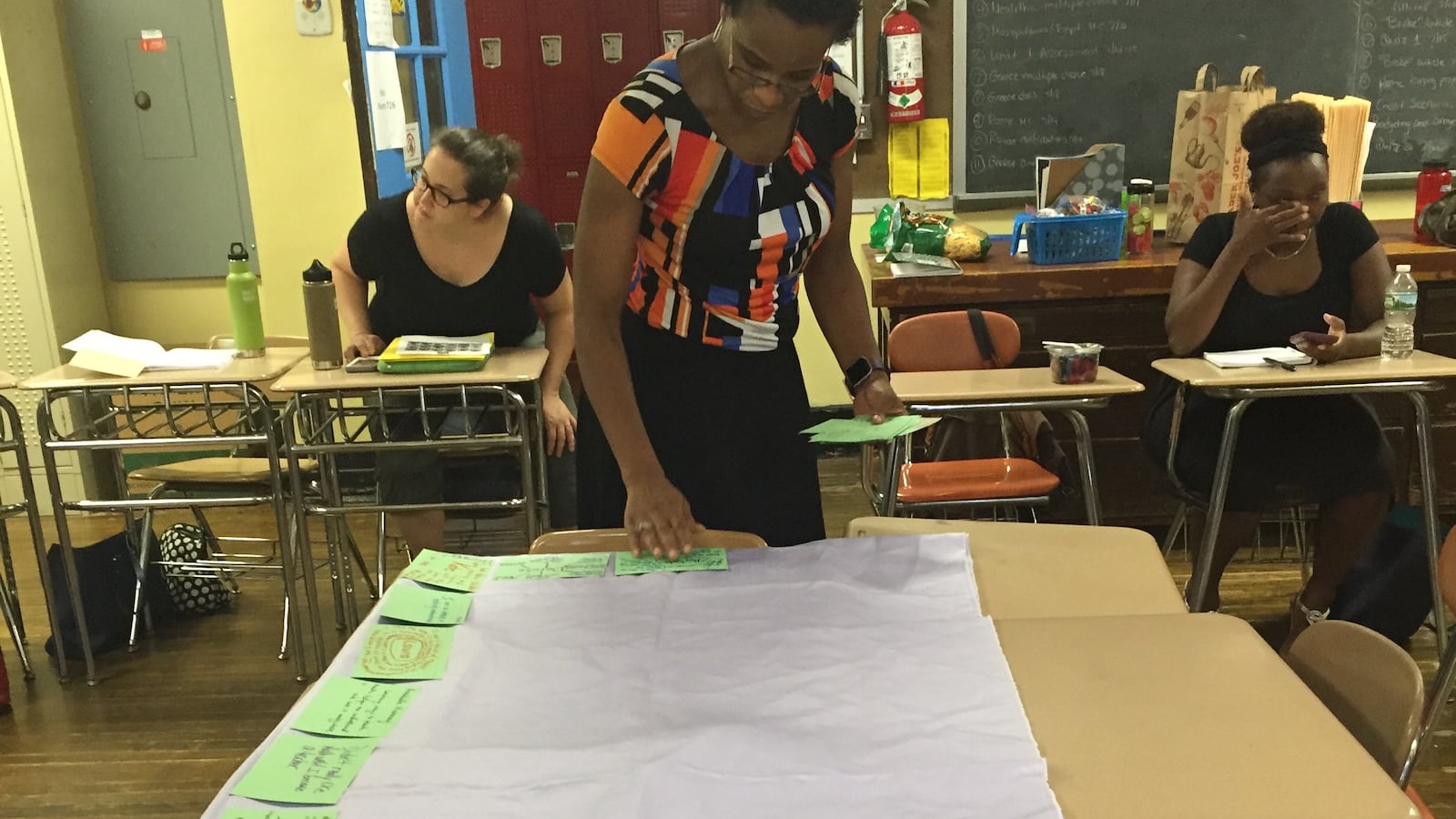At a workshop two weeks ago, Rajihah Coaxum and her fellow teachers ran into a problem. They loved the ideas they were getting — so-called “restorative justice” techniques for turning a classroom into a real community, and helping students resolve differences through dialogue. But given that almost all of teachers’ time is taken up by subject-matter lessons, teachers wondered when they could find time to actually deliver the restorative justice lessons, which aren’t about any academic subject.
Coaxum, who teaches fourth grade at Central Park East 2 elementary school in East Harlem, focused on one technique in particular, called the “centerpiece.” Classroom centerpieces are like table centerpieces, except instead of flowers, they’re made up of symbols of each of the students — like, say, index cards highlighting a person they care about, or a feeling they’re having after a news event, each glued onto a piece of cloth. The goal, as Coaxum learned at the workshop, hosted by the Morningside Center for Teaching Social Responsibility, is to build a sense of community, and a starting point for talking about sensitive topics.
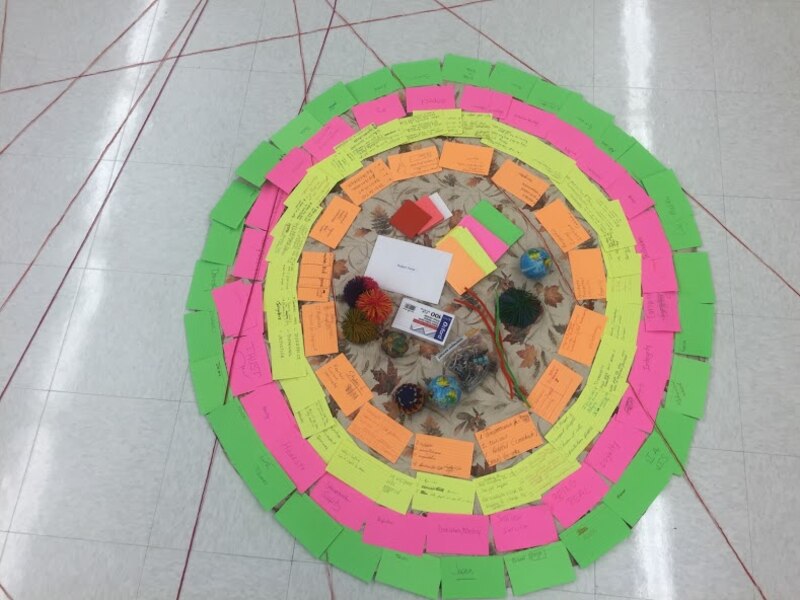
But to make centerpieces useful, Coaxum and other attendees wanted to brainstorm how they could use them as part of an academic lesson. English and history ideas came easily; students could share a favorite book or historical figure. “Math was the one where people could not figure out how to get it in,” Coaxum said. She took that as a challenge: How could she incorporate restorative justice techniques into a math class?
She tried out her concept this week at another workshop, this time one she helped plan through the New York City Math Lab, a new summer training experience for elementary school math teachers, where teachers learn by observing a math class taught to real New York City fifth-graders.
Coaxum used the index card concept — but changed the prompts so that they’d relate to math. On Monday at the math lab, students each filled out an index card with their name and how they see themselves as mathematicians. Tuesday, they each wrote about a problem they worked on that they want to continue thinking about. The responses helped each student share something about his or her identity, just focused on math.
At the end of each day of the weeklong math lab, Coaxum is attaching all the index cards to a single piece of cloth, representing the community they are trying to create. The centerpiece on Tuesday, after one round of contributions:
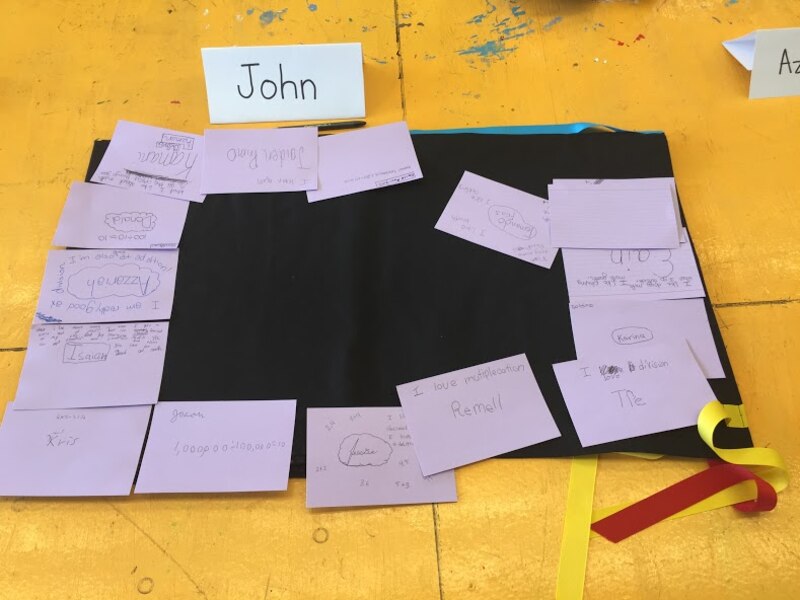
Some student’s responses:
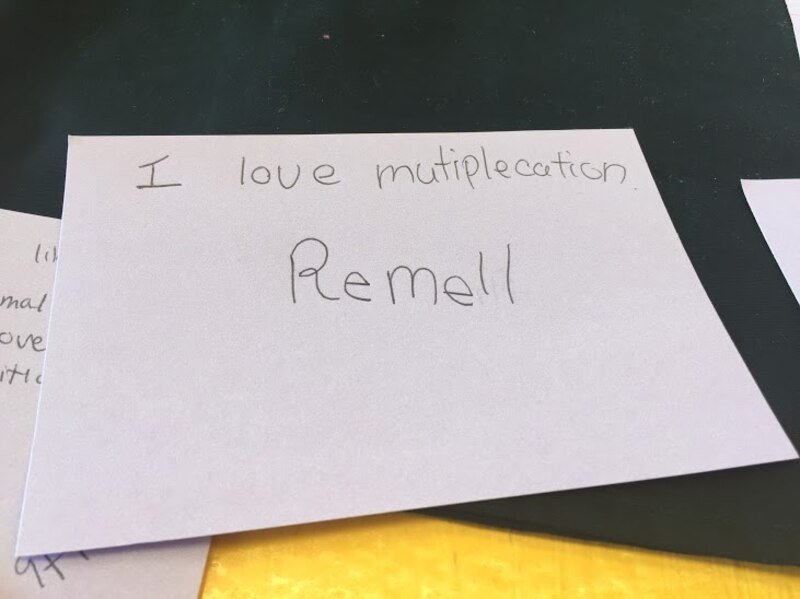
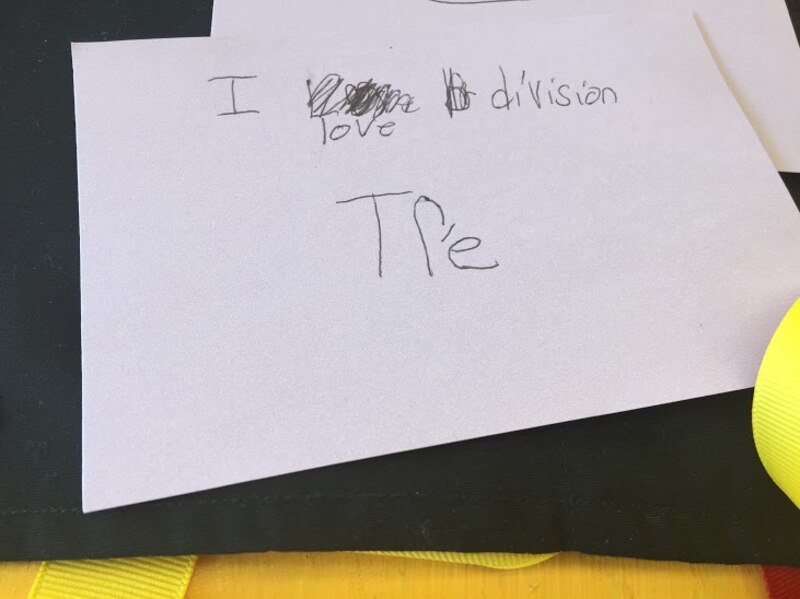
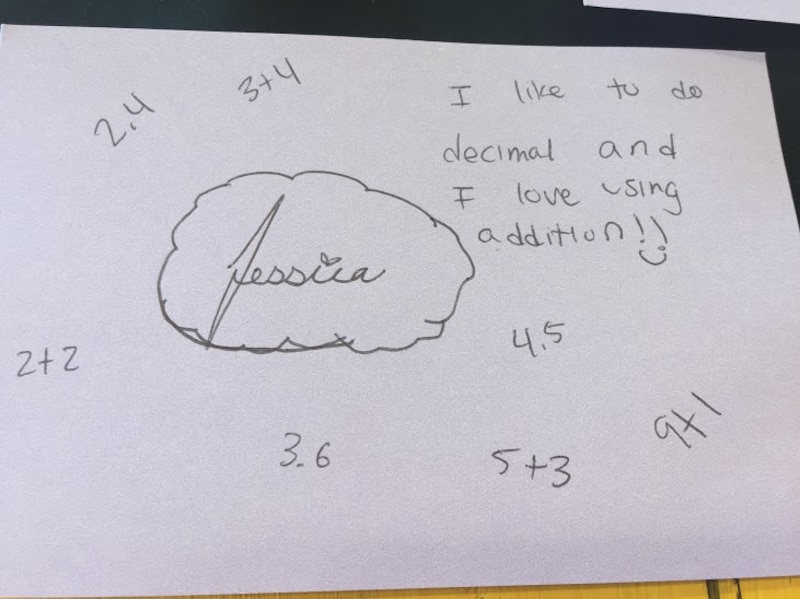
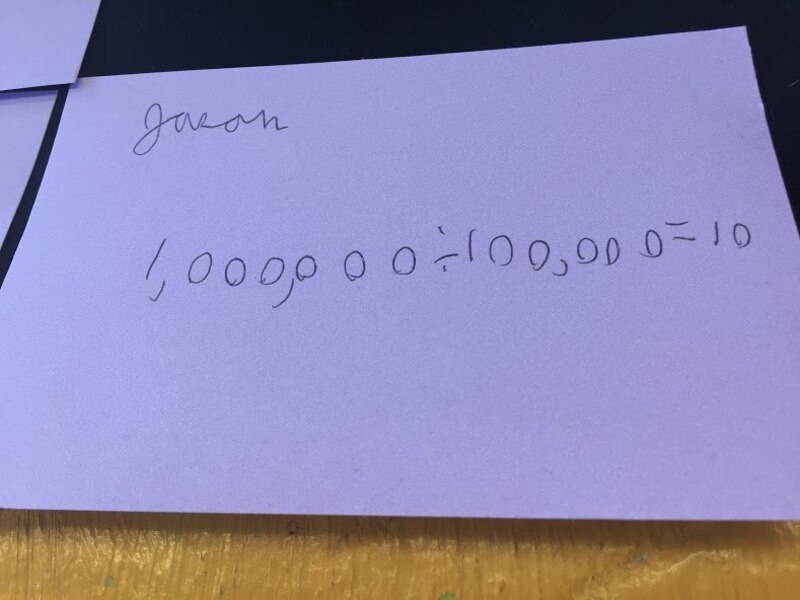
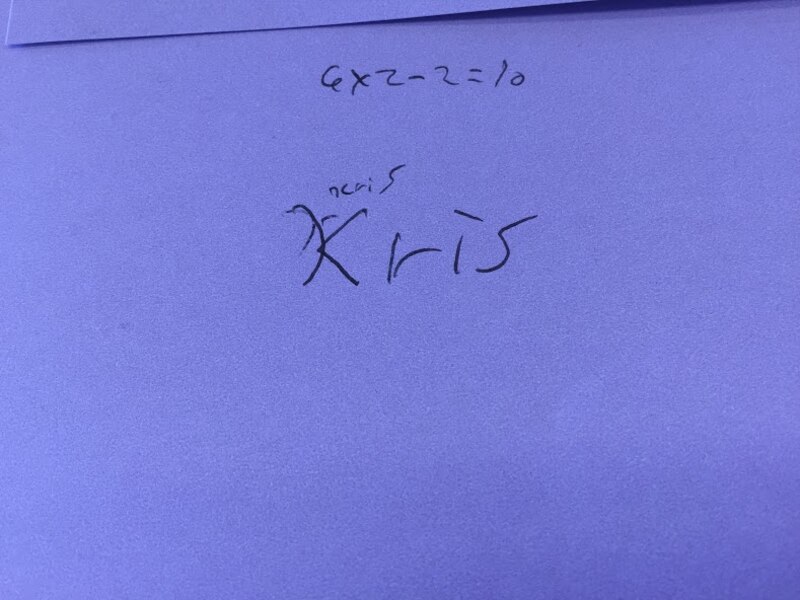
Coaxum says she’ll keep tweaking the math version of the centerpiece method, which she plans to use next year in her classroom. So far, she’s excited about its potential. “It’s reminding them that everybody has a voice, it’s an inclusive community, and everybody’s thoughts are valid,” she says — important points for any classroom community, math classes included.

